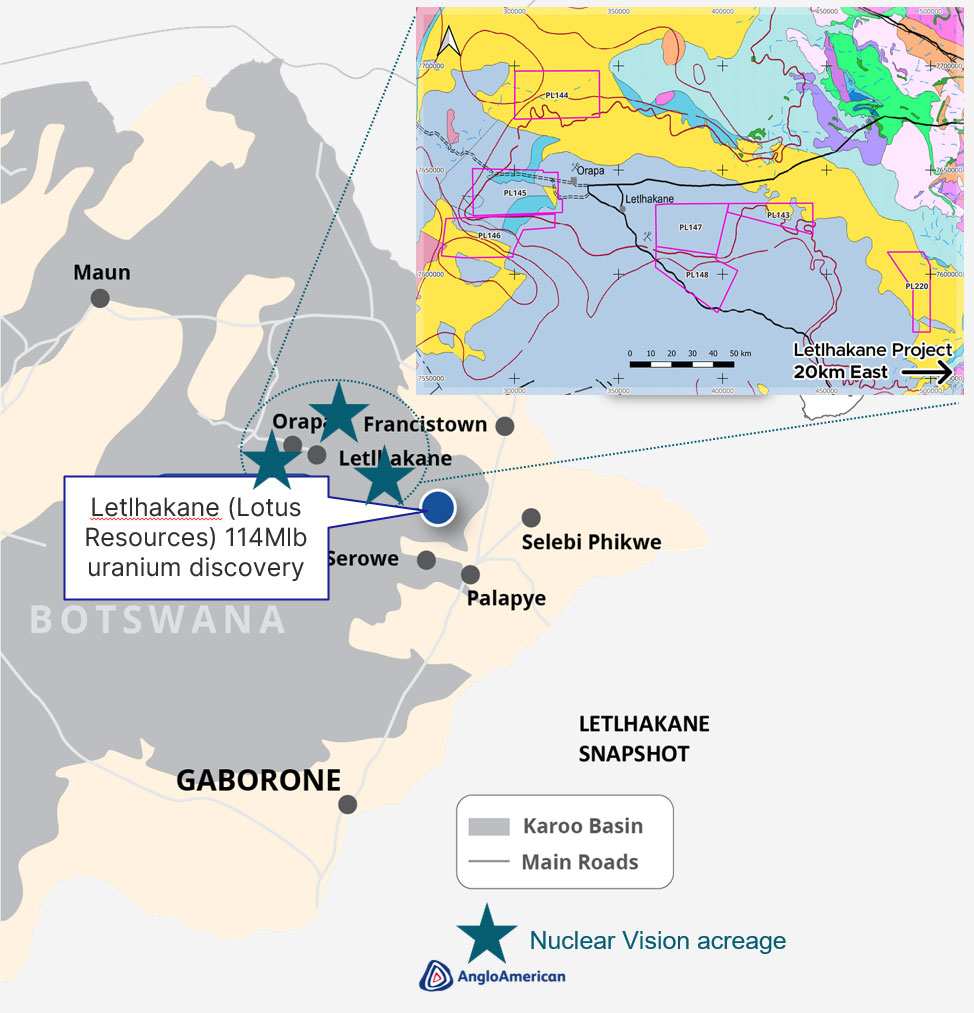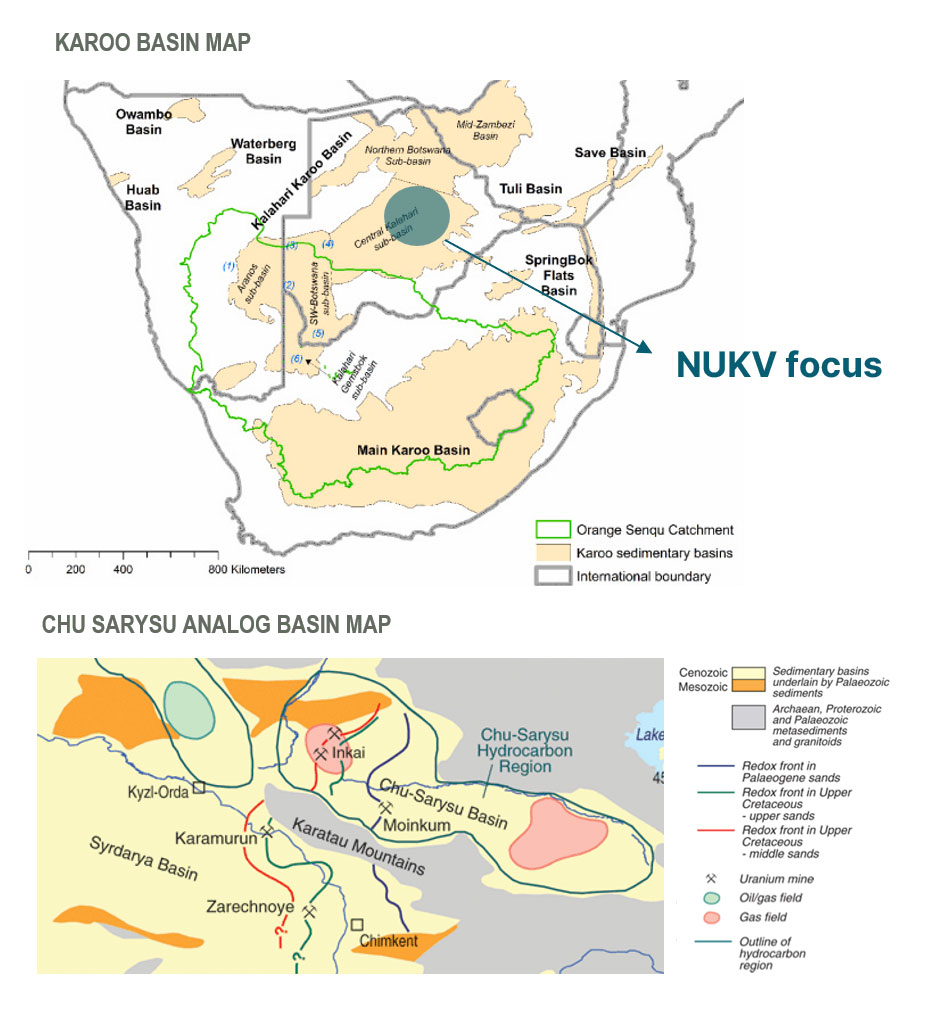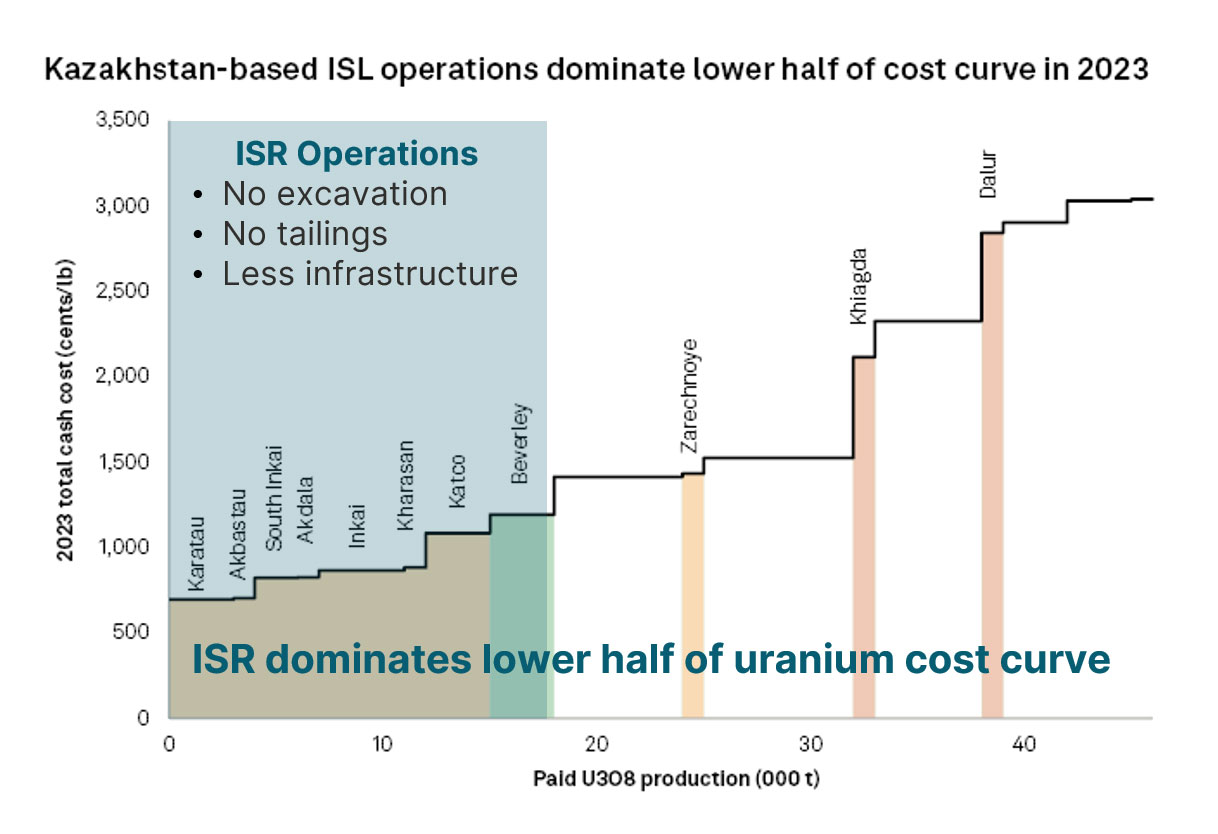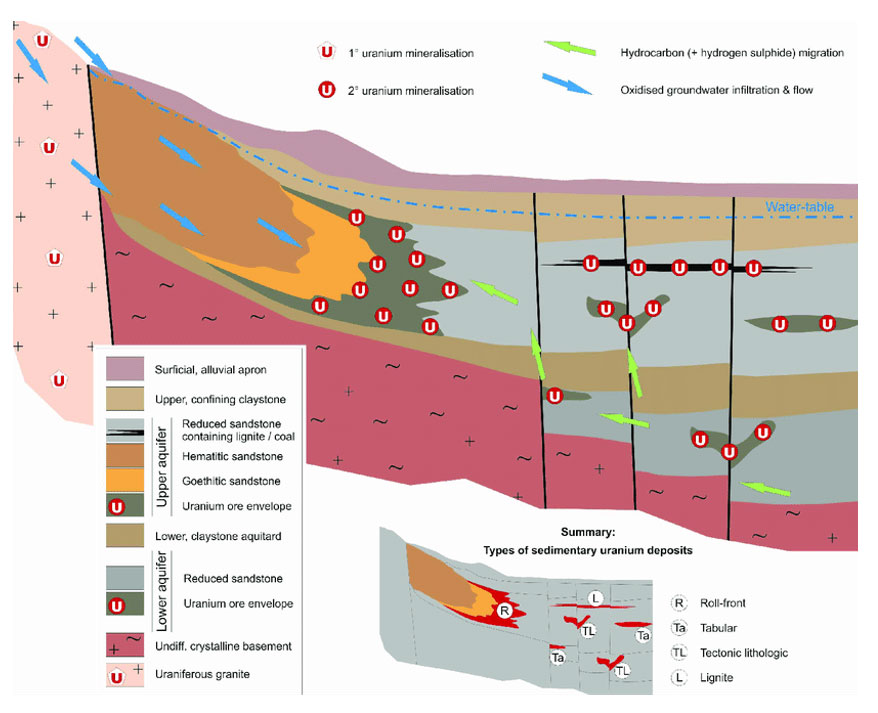

Join Our Mailing List
Sign up to receive updates on our latest news and events. Your email will never be shared or sold and you can opt out at any time.
No, I don't want to receive updates
Sign up to receive updates on our latest news and events. Your email will never be shared or sold and you can opt out at any time.
No, I don't want to receive updatesThe UA92 Project is a large-scale uranium exploration asset in central Botswana, comprising seven contiguous prospecting licenses covering approximately 2,414 km². Accessible year-round from the towns of Orapa and Francistown, the project targets flat-lying to shallow-dipping sedimentary rocks of the Karoo Supergroup, specifically the uranium-prospective Ecca sandstone formation. Mineralization is expected to occur as tabular, sandstone-hosted uranium deposits analogous to those at Lotus Resources’ nearby Letlhakane project, which lies in the same stratigraphy and hosts over 113 Mlb U₃O₈. The basin geology is well understood from prior coal and CBM exploration by Anglo American, and the deposit style is potentially amenable to low-cost in-situ recovery (ISR) methods. With Botswana ranked among the top mining jurisdictions globally, UA92 offers scale, infrastructure access, and a favorable regulatory environment for rapid advancement.


The Karoo Supergroup’s sandstones in Botswana host proven tabular and roll front sandstone‐type uranium deposits (e.g. Letlhakane). The basin is analogous to Chu Sarysu basin in Kazakhstan which hosts the world’s most prolific ISR reserves, resources and production at over 5 billion pounds of uranium (ie. Inkai, Mynkuduk, Budenovskoye etc.).
Nuclear Vision management has previously made discoveries in the adjacent Aranos sub basin which has the same geology and structural setting.
Targeted uranium mineralization at UA92 is hosted within flat to shallow-dipping sedimentary rocks of the Karoo Super Group, representing sandstone-type uranium deposits. Globally, sandstone-hosted uranium deposits account for approximately 28% of the world’s uranium resources and include giant deposits exceeding 100,000 tonnes of contained uranium. For UA92, these characteristics highlight the project’s potential to host a major uranium deposit. Importantly, the shallow depth of less than 400 metres suggests that the UA92 project is potentially amenable to low-cost in situ recovery (ISR).


Oxidized, oxygen-rich groundwater flows through permeable sandstones, carrying soluble uranium in solution. When these oxidized fluids encounter reducing environments, the uranium is chemically reduced to U⁴⁺ and precipitates as uranium-bearing minerals such as pitchblende and coffinite.
Both the Chu Sarysu and the Karoo’s Ecca Group contain extensive fluvial sandstones overlain by impermeable clays, creating the ideal stratigraphic setting for uranium accumulation. In addition, sources of natural reductants (including organic debris and hydrocarbons) provide the conditions required to form significant roll-front uranium mineralization.